
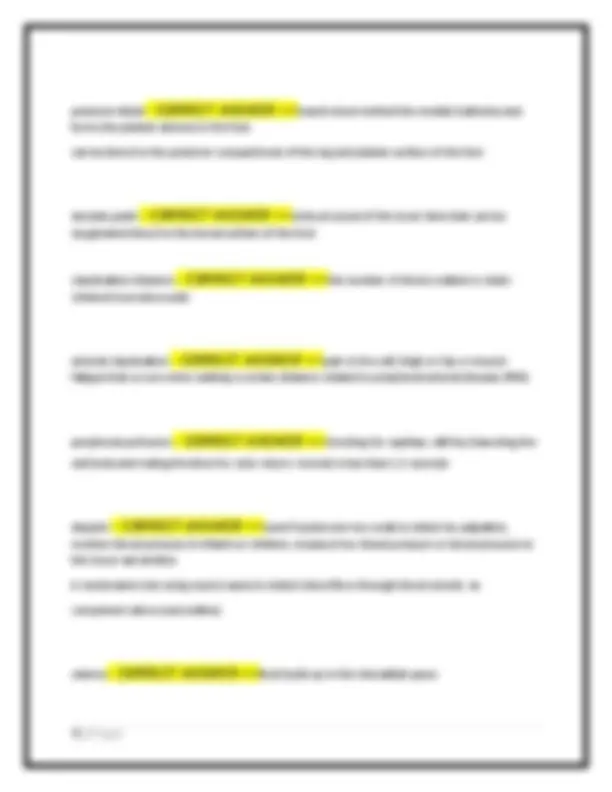
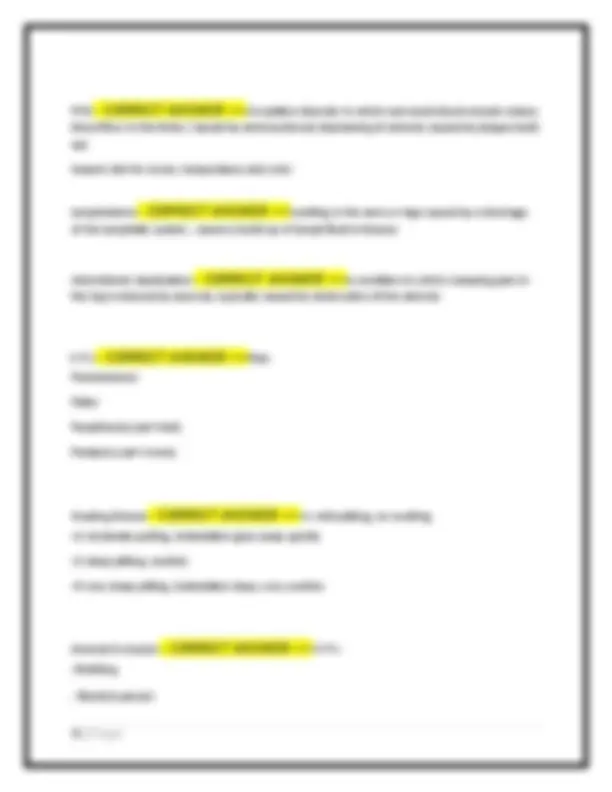
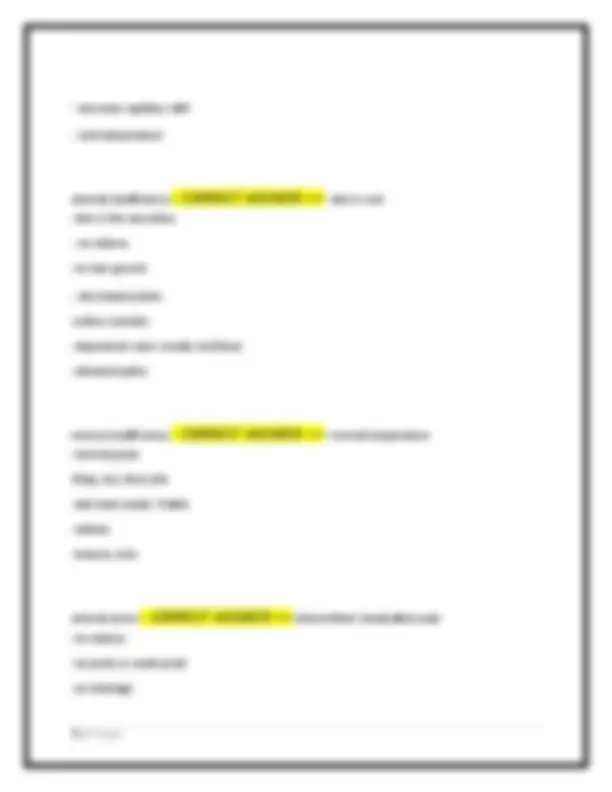
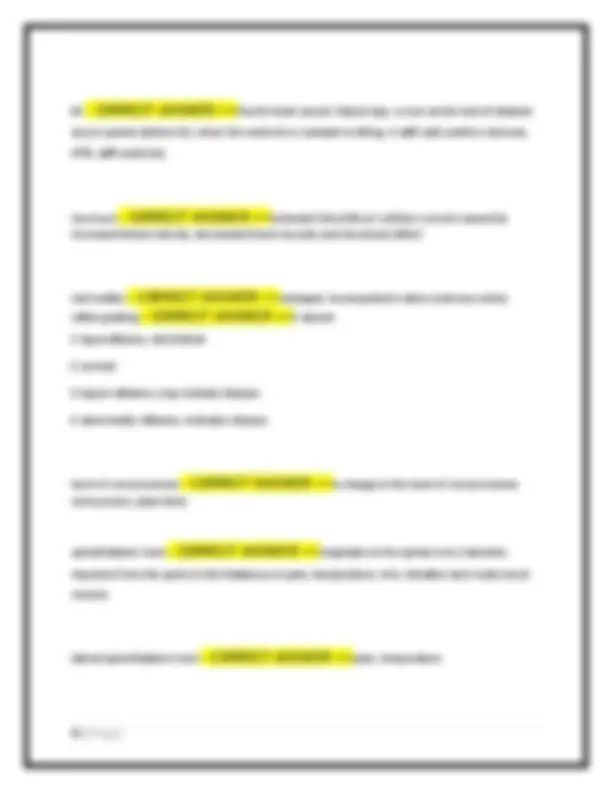
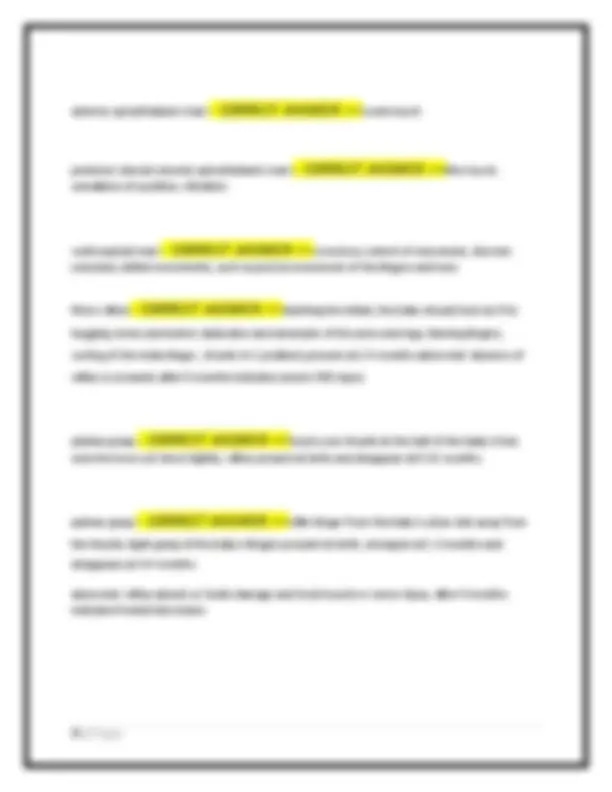

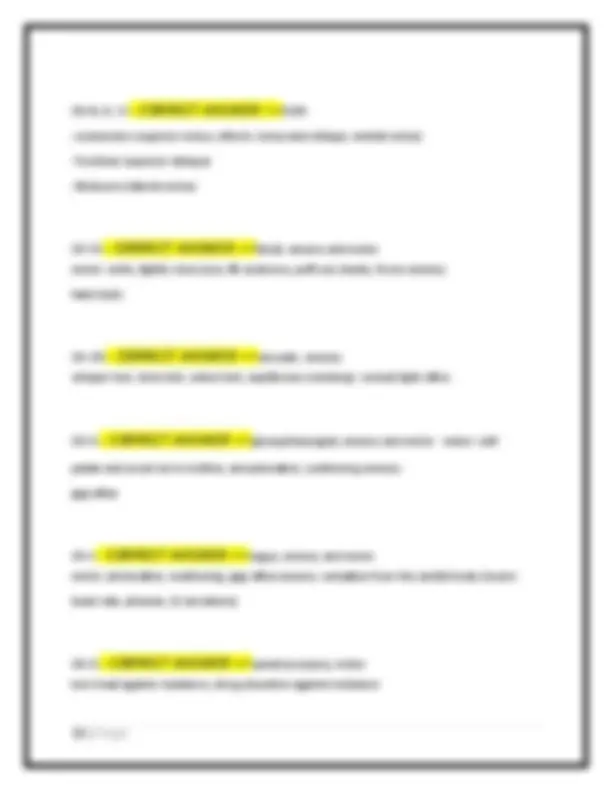
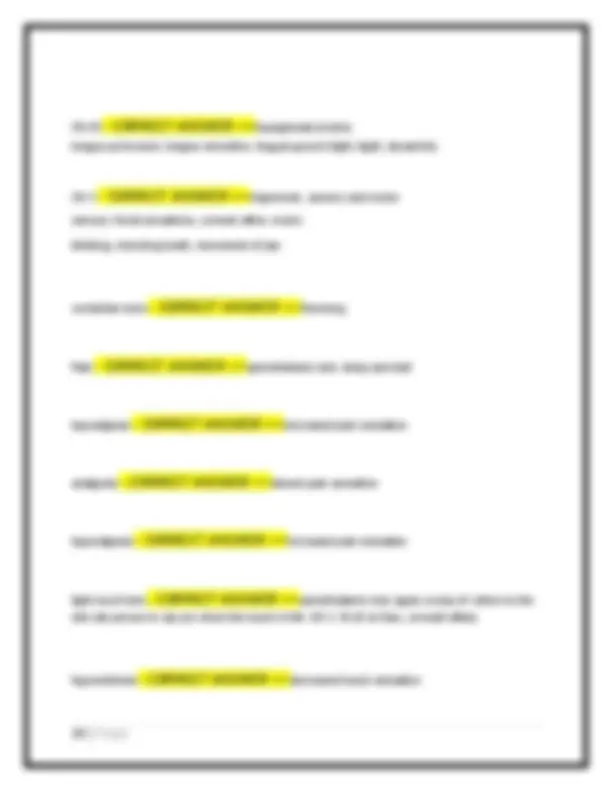
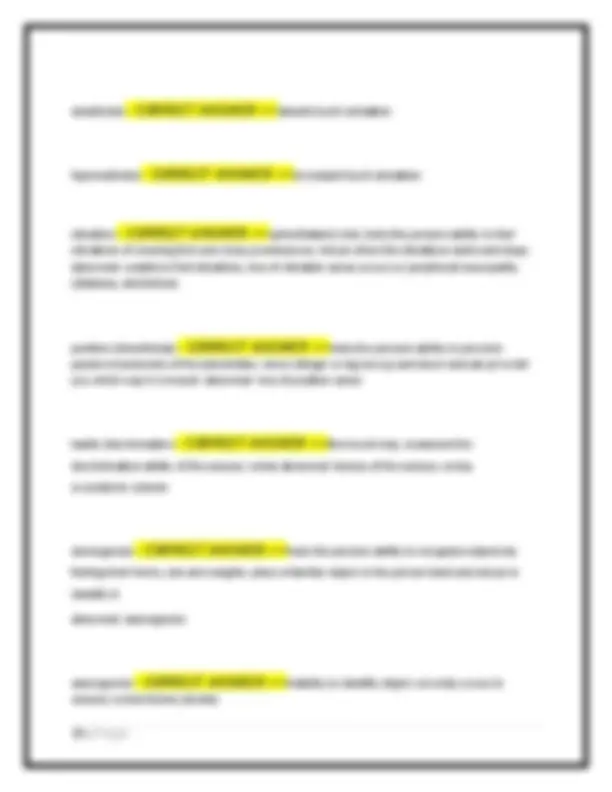
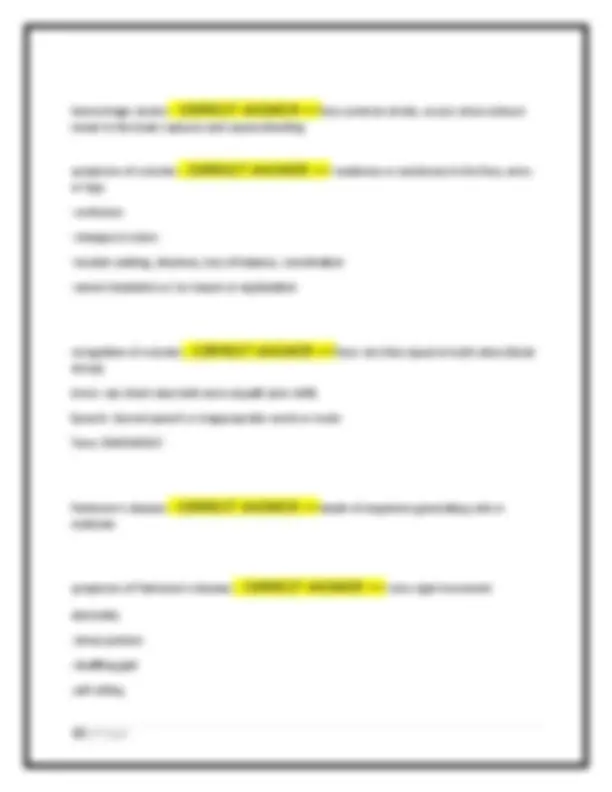
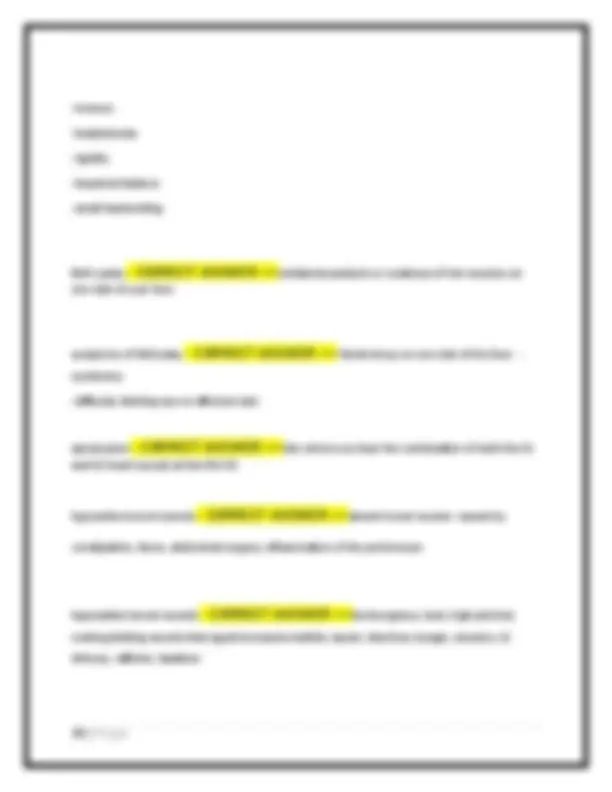
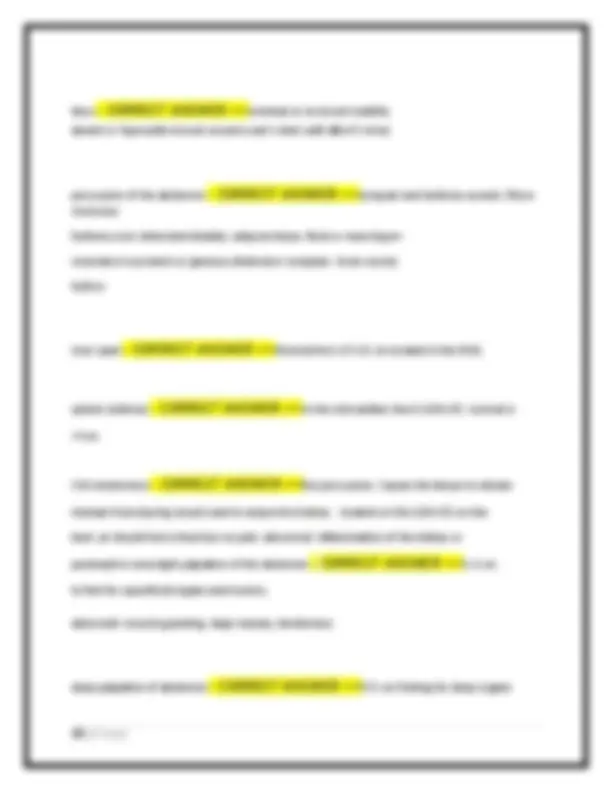
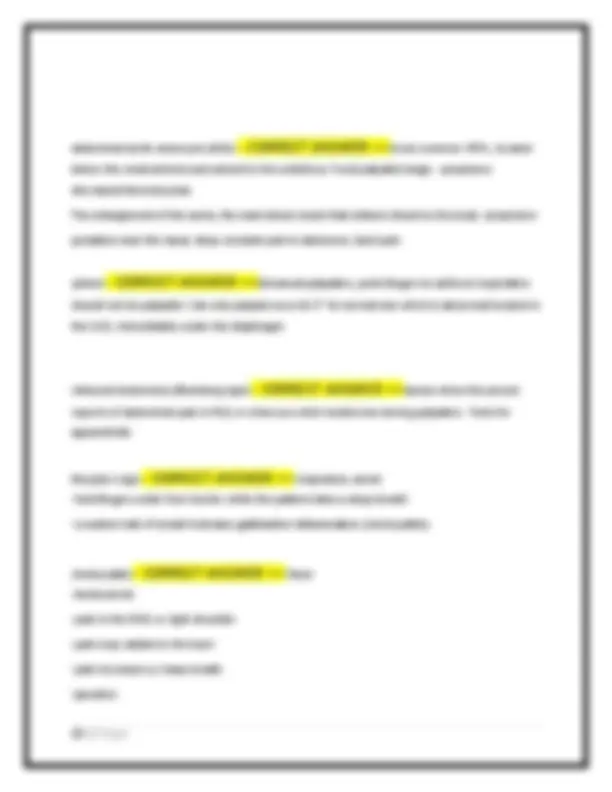
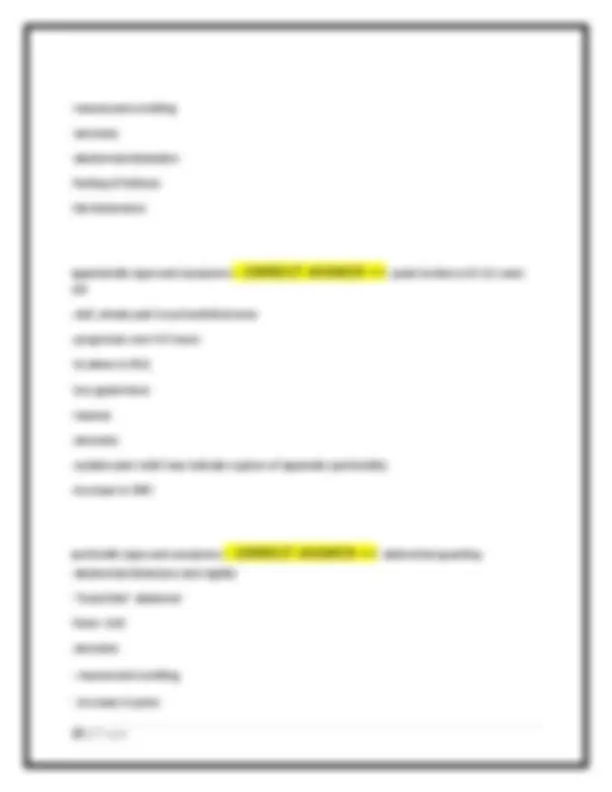
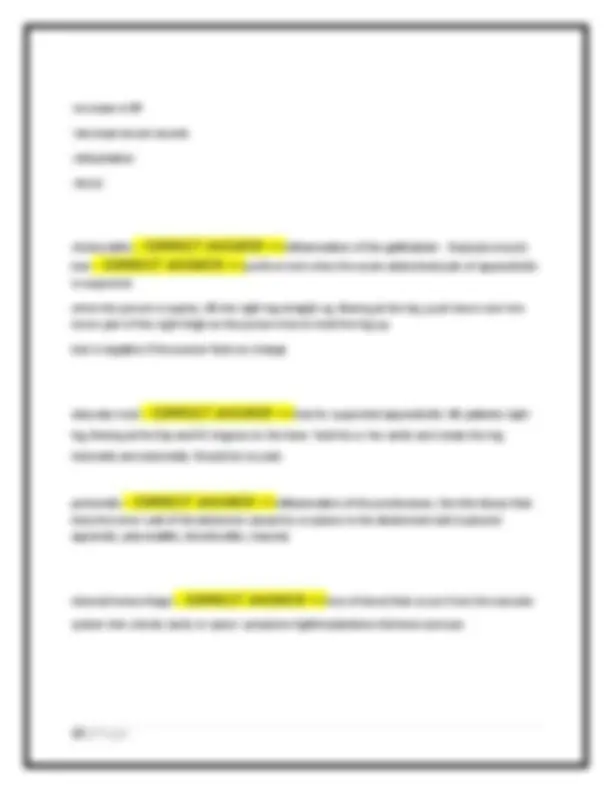
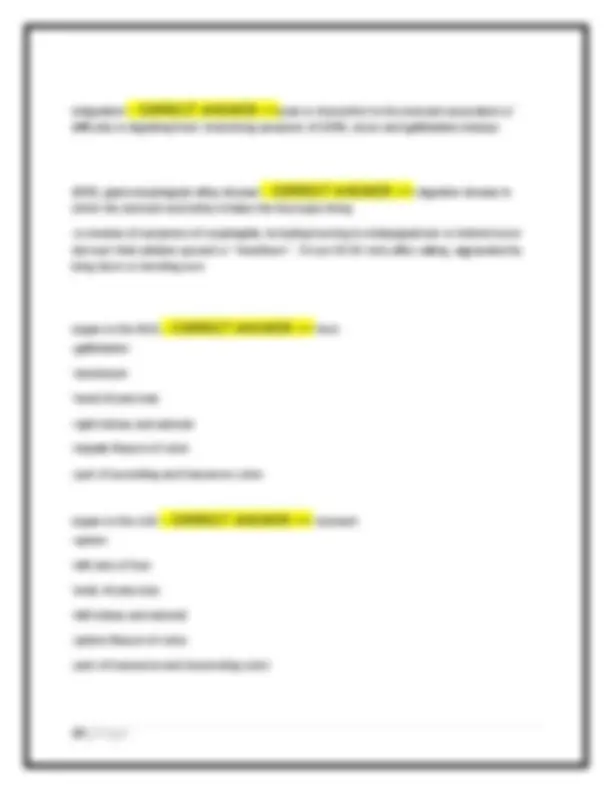
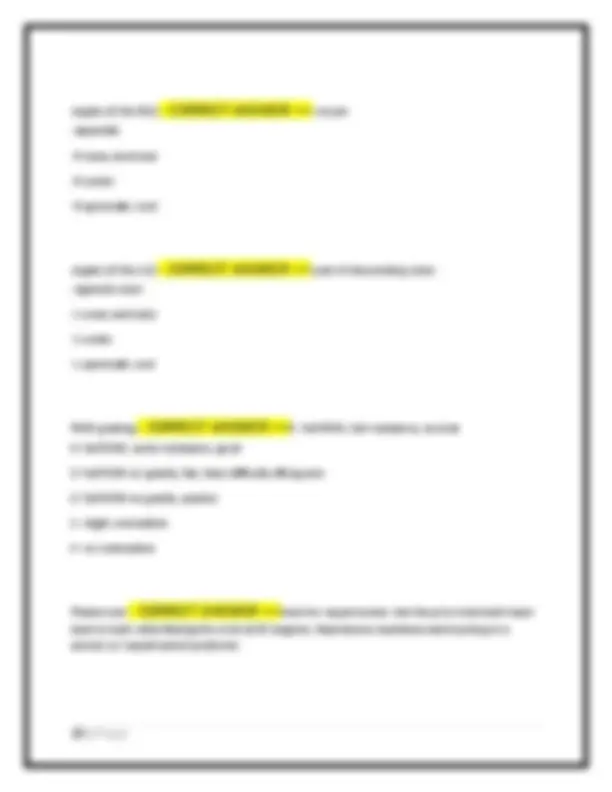
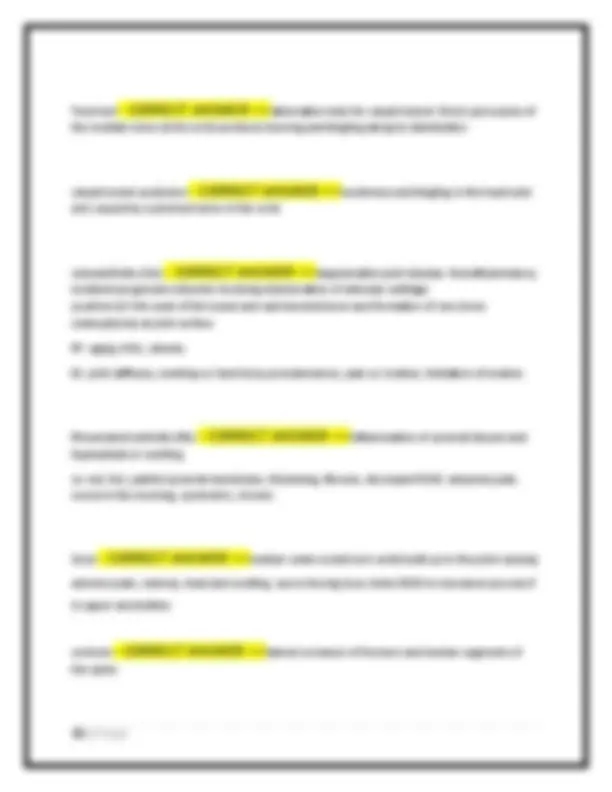
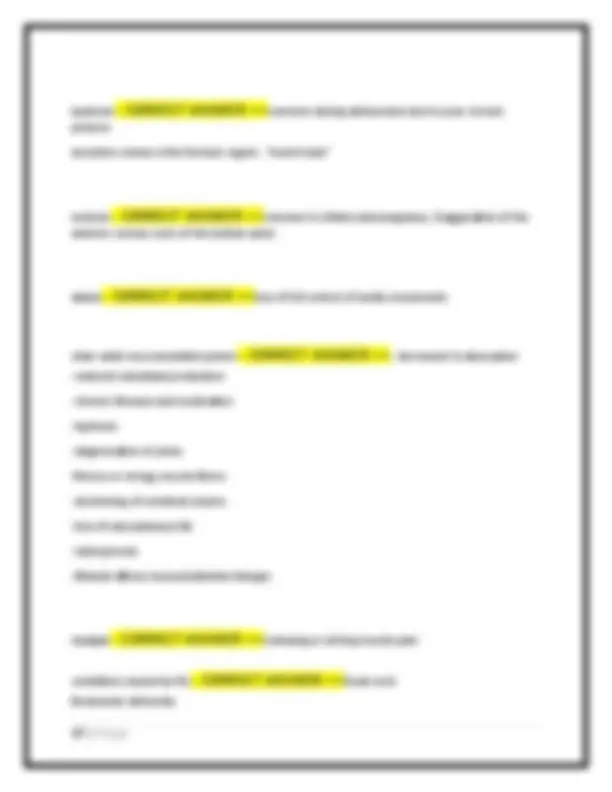
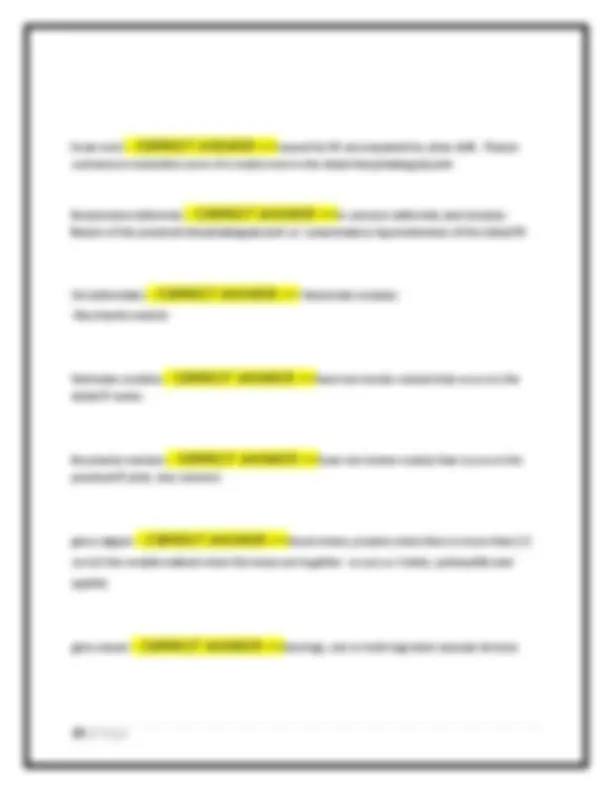
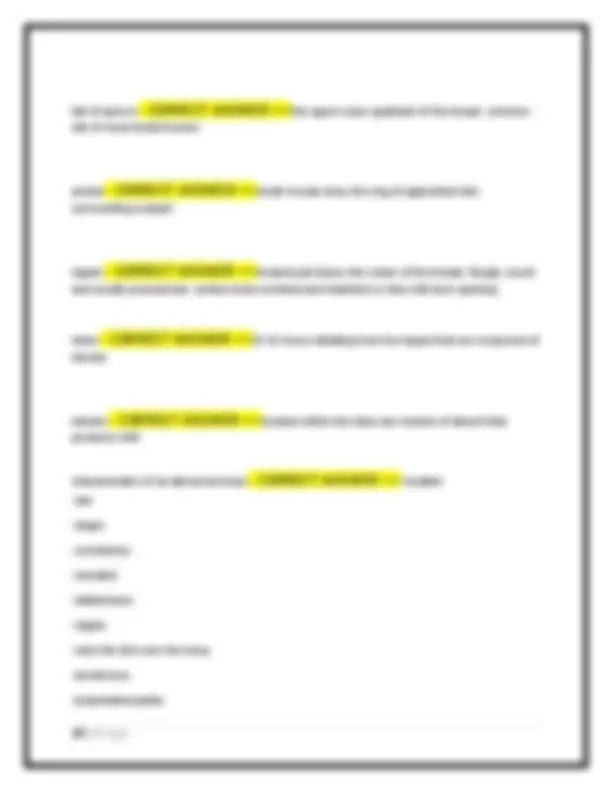
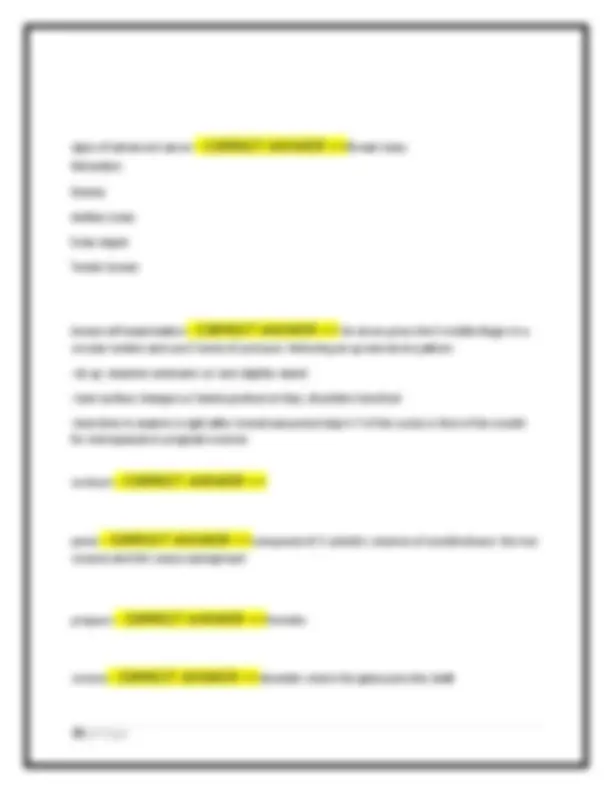
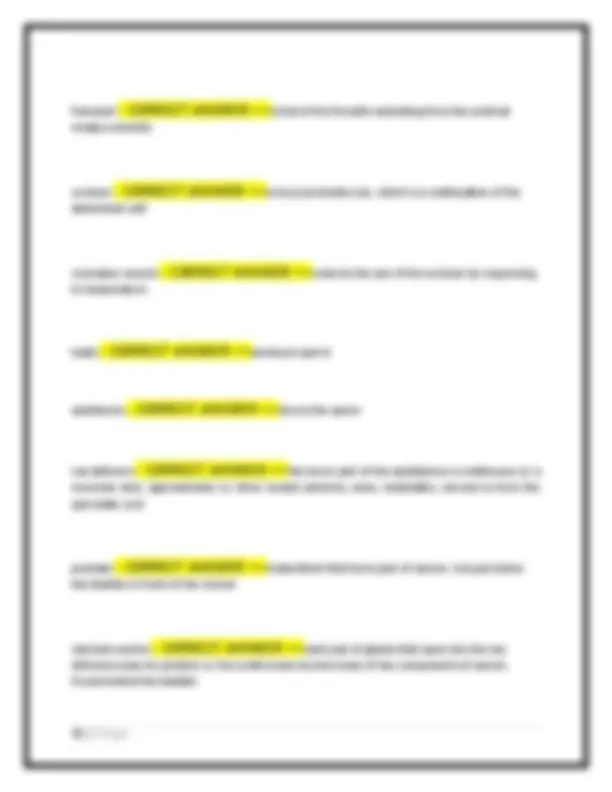
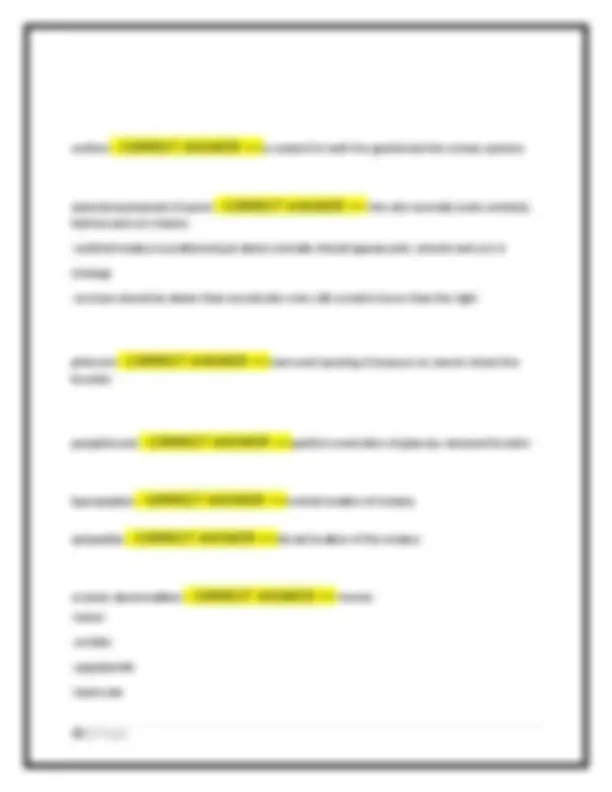
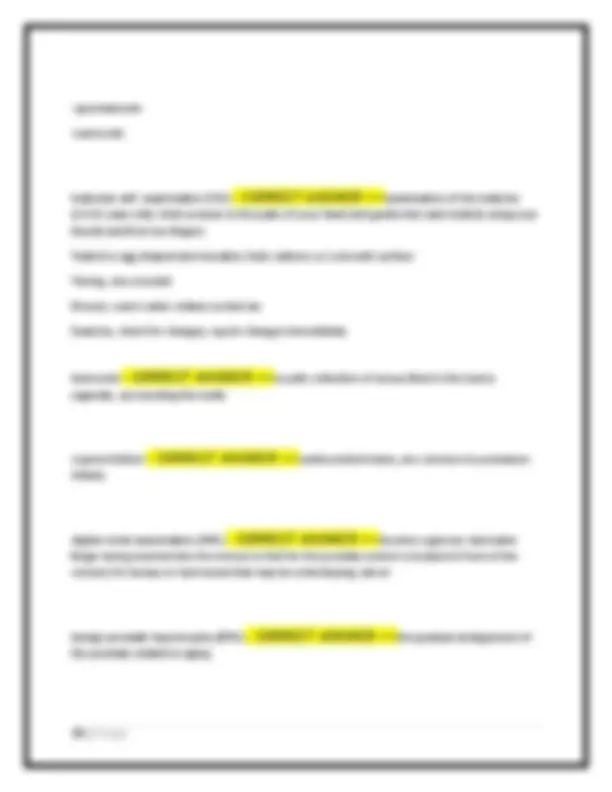
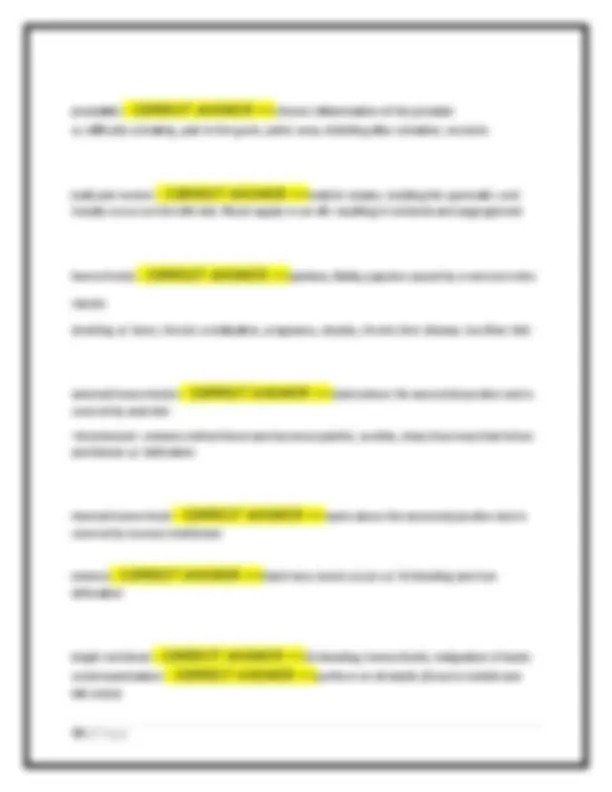
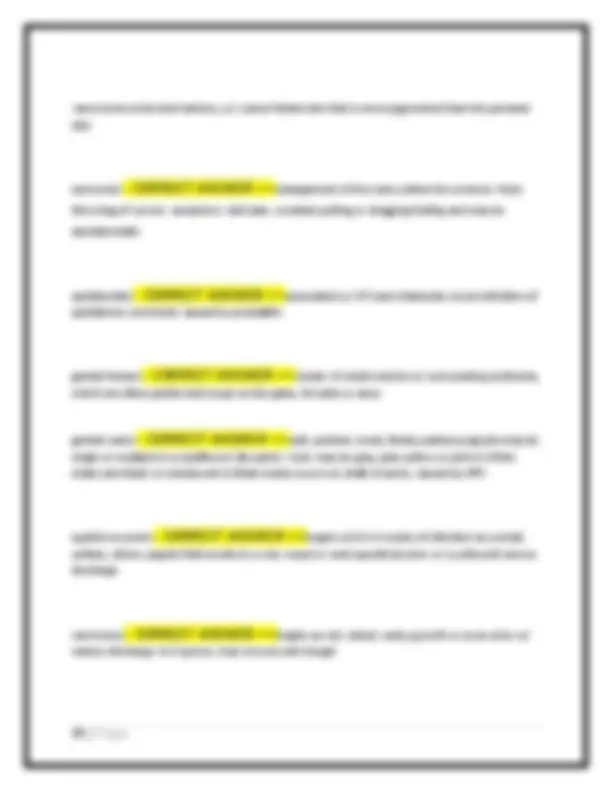
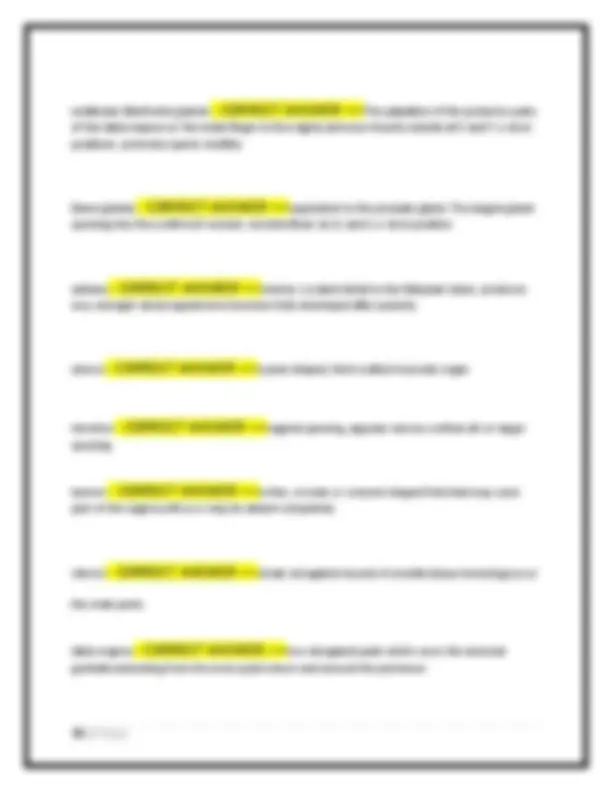
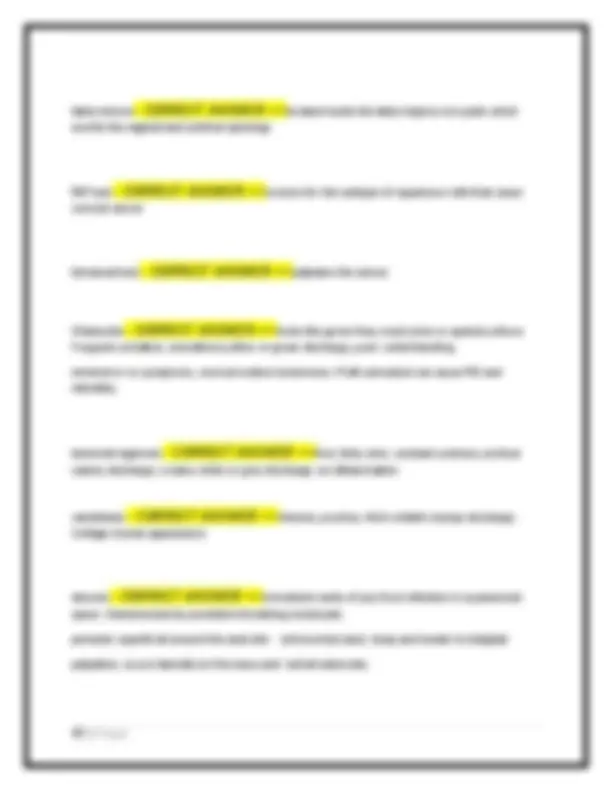
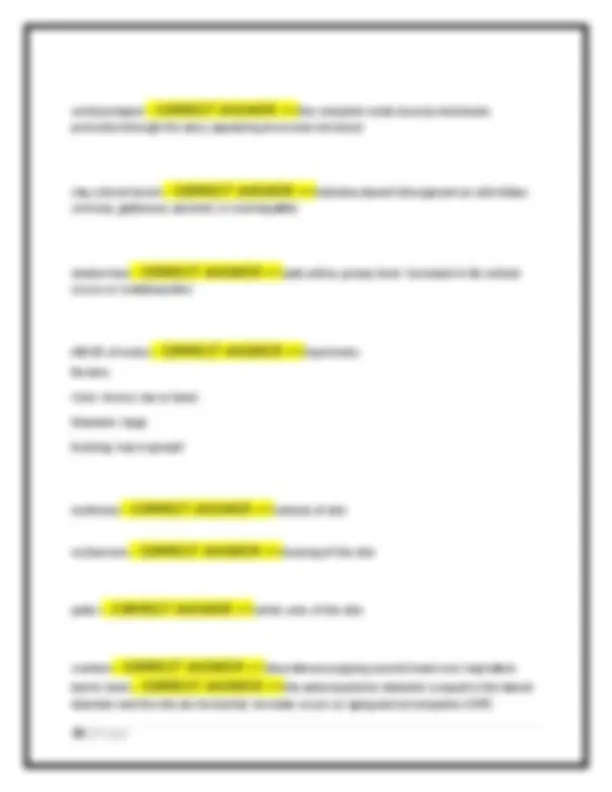
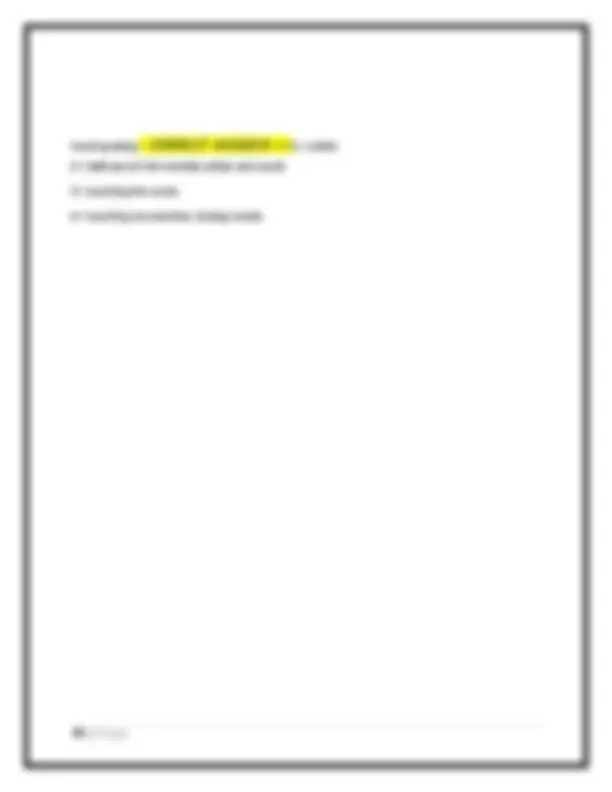


Study with the several resources on Docsity

Earn points by helping other students or get them with a premium plan


Prepare for your exams
Study with the several resources on Docsity

Earn points to download
Earn points by helping other students or get them with a premium plan
Community
Ask the community for help and clear up your study doubts
Discover the best universities in your country according to Docsity users
Free resources
Download our free guides on studying techniques, anxiety management strategies, and thesis advice from Docsity tutors
NR 304 2025 ACTUAL MIDTERM EXAM COMPLETE 200+ STRUCTURED QUESTIONS AND CORRECT DETAILED ANSWERS (VERIFIED ANSWERS) ALREADY GRADED A+ palpation of radial pulse - CORRECT ANSWER >>>Palpate both pulses noting the rate, rhythm, elasticity of vessel wall and equal force grading pulse - CORRECT ANSWER >>>3+ full bounding 2+ normal 1+ weak 0 absent
Typology: Exams
1 / 39

This page cannot be seen from the preview
Don't miss anything!
































rhythm, elasticity of vessel wall and equal force
2+ normal 1+ weak 0 absent
insufficiency
occluding both the radial and ulnar artery normal results: normal color of hand should reappear approximately 2-5 seconds abnormal results: pallor persists or a sluggish return to color suggest occlusion of the collateral arterial flow
muscle and the trachea
the hand
feel. Supplies blood to the hand
area
patella. Divides into the anterior and posterial tibial artery
of the foot becomes the dorsalis pedis. carries blood to the anterior compartment of the leg and dorsal surface of the foot
blood flow to the limbs. Caused by arteriosclerosis (hardening of arteries caused by plaque build up) Inspect skin for ulcers, temperature and color
of the lymphatic system , causes a build up of lymph fluid in tissues
the leg is induced by exercise, typically caused by obstruction of the arteries
Pulselessness Pallor Parasthesia (can't feel) Paralysis (can't move)
+2 moderate pulling, indentation goes away quickly +3 deep pitting, swollen +4 very deep pitting, indentation stays, very swollen
correlation w/ the carotid artery, signified that systole is starting
valves. Indicates that diastole is starting and systole is ending
prevent regurgitation of blood back up into the atria. Filling phase during diastole Semilunar
blood to be ejected from the heart
S2 openof the semilunar valves
resistant to filling during the early rapid filling phase. occurs after S2 during rapid filling phase when the AV valves open and atrial blood first pours into the ventricle (heard at the apex, low pitch, heart failure, heart overload)
at pre-systole (before S1) when the ventricle is resistant to filling A stiff wall (outflow stenosis, HTN, stiff ventricle)
increased blood velocity, decreased blood viscosity and structural defect
1 hyporeflexive, diminished 2 normal 3 hyper-reflexive, may indicate disease 4 abnormally reflexive, indicates disease
note person, place time
impulses from the spine to the thalamus on pain, temperature, itch, vibration and crude touch sensory
the arms and legs will extend and the opposite will flex. Appears at 2-3 months and disappears at 4-6 months abnormal- indicates brain damage
J,baby toes should go in a fanning motion (+ test in infants) present at birth and disappears by 24 months abnormal- present at 2 years occurs w/ pyramidal tract disease (motor) , in adults
light touch vibration position
(kinesthesia) tactile discrimination (fine touch) stereognosis graphesthesia two point discrimination extinction point location
location, date , time are said to be oriented to self, place and time ability to interact appropriately w/ in the context of the immediate environment
motor: smile, tightly close eyes, lift eyebrows, puff out cheeks, frown sensory: taste buds
whisper test, rinne test, weber test, equilibrium (romberg) corneal light reflec
palate and uvual rise in midline, and phonation, swallowing sensory: gag reflex
motor: phonoation, swallowing, gag reflex sensory: sensation from the carotid body (lowers heart rate, pharynx, GI secretions)
turn head against resistance, shrug shoulders against resistance
tongue protrusion, tongue retraction, lingual speech (light, tight, dynamite)
sensory: facial sensations, corneal reflex motor: blinking, clenching teeth, movement of jaw
skin ask person to say yes when the touch is felt. CN V, VII (if on face, corneal reflex)
on the skin. A good measure of sensory loss if the person cannot make the hand movements needed for sterognosis
the separation of two simultaneous pin point on the skin. Apply two point of an opened paper clip to the skin note the distance which the person no longer perceives two separate points
process and cognition
knees w/ both hand and turn over and pat knees. should be done with equal turning and a quick, rhythmic pace abnormal- lack of coordination, slow, clumsy and sloppy response finger
finger to touch your finger and this their own finger should be smooth and accurate abnormal- lack of coordination, dysmetria, past pointing
ccurs w/ cerebellar disorders or acute alcoholism
pressure
big toe and fanning of the toes
flow is interrupted to a part of the brain
blocks a blood vessel in the brain
one side of your face
numbness
and S2 heart sounds at the 5th ICS
constipation, ileum, abdominal surgery, inflammation of the peritoneum
rushing tinkling sounds that signal increased motility causes: diarrhea, hunger, smokers, GI distress, caffeine, laxatives
absent or hypoactive bowel sounds (can't chart until after 5 mins)
clockwise Dullness over distended bladder, adipose tissue. fluid or mass hyper- resonance is present w/ gaseous distension tympany- drum sound, hollow
<7cm.
instead of producing sound used to assess the kidney. located on the 12th ICS on the back pt should feel a thud but no pain abnormal- inflammation of the kidney or
to feel for superficial organs and tumors. abnormal- muscle guarding, large masses, tenderness